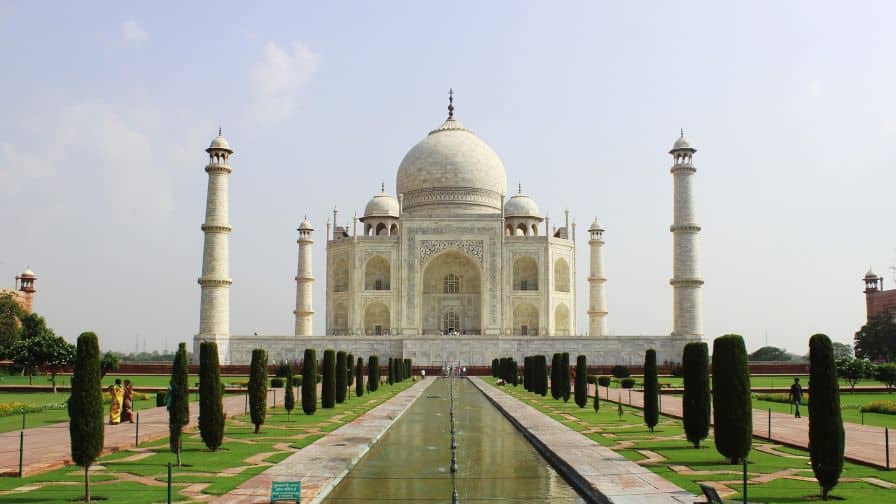The latest part of Sociomantic Labs’ ‘Digital Marketing Deep Dive’ series offers the lowdown on India, where Diana Loriot, the firm’s commercial director for the market, lays out the opportunity at hand.
11 years ago, one of the biggest success stories from the dot-com era, eBay acquired Baazee.com Inc, a Mumbai-based marketplace, to the tune of $50 million. With this acquisition, eBay laid down a foundation that would enable it to expand its growing global footprint in the nascent but steadily growing Indian subcontinent.
In 2015, India has come a long way from being a germinating market with the potential to grow. Today, it’s considered one of the world’s largest playgrounds for digital marketing, thanks in part to the unprecedented growth of e-commerce within the region.
With the current e-commerce market being appraised at nearly $42 billion, a number of factors such as increased spending power, influx of digital payment options, staggering penetration of mobile phones and robust investments into the market have been major influencing factors behind India’s unprecedented online market growth.
A rapidly evolving, dynamic market
Named by Gartner as the ‘fastest growing e-commerce market in Asia’ and poised to reach $128 billion by 2017, as per a recent joint study by Assocham-Deloitte, India presents a vast pool of opportunities for advertisers.
Despite digital commerce evolving into India’s fastest-growing sector, online shopping is still in its initial stages of maturity—low internet penetration is one of the biggest challenges. While things seem to be looking up for this largely untapped market of over 1.2 billion people, India is pegged to cross the 300 million internet user mark by the end of 2015, overtaking the US as the world’s second-largest internet market. The country has recently been witnessing what can be called a ‘high-loss-high-valuation’ narrative.
In a bid to acquire more customers, at any cost, companies are investing millions of dollars into branding, marketing and customer acquisition. With every player eyeing a bigger share of the pie, one can’t blame investors for enabling start-ups with sky-high valuations based on forecasted earnings, resulting in high cash-burn rates.
While burn rates may be feasible for some companies armed with deep pockets, the repercussions are starting to show. With two food tech start-ups, a real estate online portal and a retargeting partner (now a data management solutions provider) laying off dozens or hundreds of employees in the past few months across India, one must pause to consider this phenomenon of fast and furious growth and the inflated valuations that have been creeping into the ad tech space as well.
The market is changing at a dynamic pace, and instances such as these only further reiterate the need for advertisers to be discerning in their selection of ad tech partners, choosing those which invest wisely in innovation and technology. Partners that focus on reinvesting their profits into product innovation and have growth firmly rooted in sustainable practices, rather than participating in price wars, showcase their ability to not only survive but also adapt to a highly dynamic market.
Clash of the titans – offline vs online
The exponential growth that India has witnessed in online marketing over the past five years reflects strongly on how online retailers have begun to overshadow, or at least offer strong competition, to traditional offline stockists and retailers. Competition from online bigwigs is eating up margins of traditional brick-and-mortar stores, which has set in motion the need for offline sellers to enhance their digital strategies and investments to stay in the game.
With more advertisers gaining experience with technologies like programmatic advertising, and realising the higher efficiency and performance that digital as a medium is capable of delivering, more brands are looking at digital advertising as a more investment-friendly channel to drive results. Not only is this a major win for an extremely price-sensitive market like India, but it also implies that there has been a significant budget shift from traditional advertising models such as print, radio, and television.
Placing the consumer at the heart of it all
A change in lifestyle preferences, economic scenarios, education and a wider exposure to media and technology have played a major role in shaping the way the Indian customer shops. Therefore brands must focus on product localisation, value for money and investments in customer loyalty, to capture and retain the interest of its consumers.
It is no surprise that Indians love to shop for the best possible deals. Be it any festival or event, Indian shoppers are always on the lookout for offers that match the occasion, and e-tailers are pulling out all stops to satiate the appetite of the deal-hungry consumer.
This drastic shift in buying habits, accelerated by the influx of online discounting is also forcing offline retailers to react. Many have resorted to offering in-store discounts to keep their customers enticed and to prevent e-commerce players from eating into their margins.
Data-Driven Decision Making
Today, most of India’s leading e-commerce players realise the value behind investing in adoption of algorithmic advertising technologies and data-driven marketing. While, as a partner, we now see speedier technical implementations in place, quicker resolution of issues and faster results from the advertiser’s end, a lot remains to be done though when it comes to consulting advertisers on securing programmatic strategies and technologies in place.
Hence, it is imperative that ad tech partners offer extensive services, in addition to working with digital industry bodies, to make the market more aware of the advanced applications of programmatic technologies.
In addition to offering clear technical implementation guidelines and constant engagement from a dedicated service team, ad tech partners must help advertisers create the right kind of setups within their product and technical teams, to help them optimise their programmatic campaigns.
Customer loyalty is key to long-term success
On the whole, it is pretty obvious that advertisers are rethinking their marketing investments and strategies to better align themselves to the way the Indian consumer shops.
There is now a much-heightened sense of realisation about investing in data-driven, real-time advertising to appeal to shoppers at a user-individual level. Actively engaging with customers in a highly personalised way is the key to sustained loyalty. As the e-commerce market in India continues to evolve and grows, loyalty is going to be a critical subject for advertisers. It is therefore essential to further accelerate programmes that focus on overcoming current challenges in logistics, infrastructure, technical implementation, and shift the limelight to building long-term customer loyalty, that will help usher in a new wave of sustainable growth in Indian e-commerce.

